Case Studies.
Add Case Study
Our Case Study database tracks 22,657 case studies in the global enterprise technology ecosystem.
Filters allow you to explore case studies quickly and efficiently.
Download Excel
Filters
-
(6,653)
- (2,601)
- (2,127)
- (945)
- View all
-
(5,642)
- (2,469)
- (1,692)
- (826)
- View all
-
(5,571)
- (2,178)
- (1,766)
- (643)
- View all
-
(5,247)
- (2,179)
- (1,715)
- (1,321)
- View all
-
(2,881)
- (1,448)
- (574)
- (376)
- View all
- View all 15 Technologies
- (1,985)
- (1,985)
- (1,915)
- (1,679)
- (1,629)
- View all 42 Industries
- (8,728)
- (4,742)
- (3,618)
- (3,233)
- (2,947)
- View all 13 Functional Areas
- (3,304)
- (2,787)
- (2,603)
- (2,006)
- (1,630)
- View all 129 Use Cases
- (13,581)
- (5,296)
- (4,272)
- (3,520)
- (2,856)
- View all 9 Services
- (504)
- (432)
- (416)
- (382)
- (301)
- View all 1083 Suppliers
Selected Filters
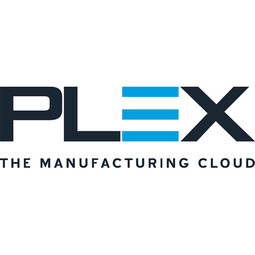
|
Transforming Manufacturing Operations: A Case Study of Kamco Industries
Kamco Industries, a subsidiary of Kumi Kasei, is a full-service provider of product design and manufacturer of injection, sheet molded, and Formed Fiber Felt products. The company faced several challenges in its operations. Firstly, its spreadsheet-based business processes were not meeting the requirements of major clients such as American Honda. Analyzing performance involved stacks of paperwork, which was time-consuming and inefficient. The IT department was spending too much time supporting business processes rather than providing a strong technology foundation. The year-end closing process required countless hours of overtime and took weeks to complete. Kamco's goal was to respond as quickly as possible to customer needs and tailor its business processes to the expectations of its largest clients. However, the company's existing systems and processes were not up to the task.
|
|
|

|
On-line Inspection Of Automobile Assembly Based on Deep Learning
The cost of manufacturing testing is high with human capital. Manufacturers can only inspect partially (not all) of the products manufactured. The level of automation and equipment intelligence has been low.
|
|
|
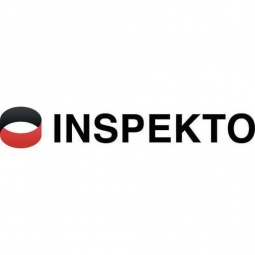
|
How to Track and Analyze Production Quality Using AI
Extra loop of manual double-checks is needed in automotive quality inspections.
|
|
|
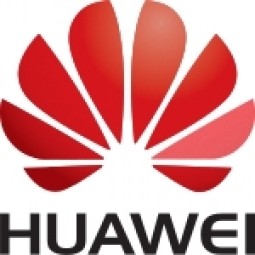
|
Error Proofing Inspection after Product Assembly
In the assembly workshop of an automobile OEM, the last process of automobile production still needs to rely on a lot of manpower to assemble the body. For the scene of lamp inspection, due to the mixed production inspection, the inspectors completely rely on experience to inspect the model. In addition, due to the serious light interference on the assembly line, the inspectors also need to avoid the interference of external light sources on the detection of vehicle lights, and the detection cycle is short, which also has high requirements on the inspection speed of the inspectors.At present, traditional manual quality inspection faces the problems of quality, special scene response and information integration:1 Quality: In manual quality inspection, experienced quality inspectors are required to know exactly which parts are equipped with which models based on 20+ types of vehicles. The requirements for human experience are high, and new employees are unfamiliar with models. There will be problems with missed inspections.2 In the case of a strong light source for a long time, it is necessary to take relevant human protection to prevent the eyes from being exposed to the light source for a long time.3 Information integration: at present, it is impossible to match the material of the model and the lamp, and the material deviation cannot be traced.
|
|
|
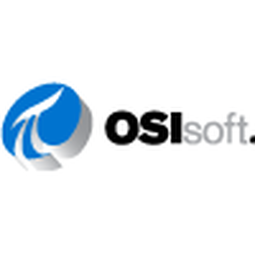
|
Tendeka Uses Real-Time Telemetry Data to Improve Clients’ Operating Efficiency
Oil and gas producers face serious consequences if a downhole safety valve fails. In many cases, both company policy and government regulations require the well to be shut in for safety and environmental reasons. Some intervention-based tools allow the well to return to production, but unfortunately these tool designs, often decades old, are fraught with technical challenges, which can diminish the total production potential of the compromised well and the range of the well’s functionality.Tendeka, a provider of completions technology to the oil industry, developed an innovative smart valve that relays information bi-directionally from the downhole to the surface and can also be controlled wirelessly from the surface. The valve transmits regular wireless signals to the surface, which convey important information about downhole conditions and well operations. The valve allows wells to be returned to production during testing, while also providing the required downhole closure capability, should it become necessary to shut in the well. With this deployment of Electronic Ambient Valve (EAV) and Edge Data Storage (EDS) technology, Tendeka wanted to prove that continuous monitoring of the valve function could be conducted by both the operator and Tendeka personnel in headquarters.
|
|
|
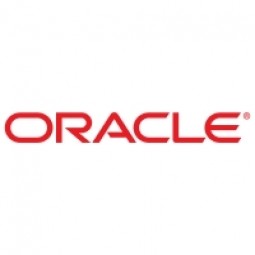
|
Wavenet Technology Enhances Query Speed and Efficiency with MySQL HeatWave
Wavenet Technology, a digital marketing company, assists global brands in optimizing their online marketing campaigns using artificial intelligence and big data analytics. Customers access a web dashboard to monitor their campaigns’ performance in real time. However, as the number of simultaneous dashboard queries exceeded one million, the time to extract, transform, and load (ETL) data for the reports became increasingly lengthy. The processing exceeded the capacity of Wavenet Technology’s systems, which were running on AWS Redshift, causing customers to wait several minutes for the systems to respond. This situation began to hinder Wavenet Technology’s business development plans, prompting the company to seek a high-performance, secure, and affordable database that could support its growth targets.
|
|
|
_18.jpg)
|
Thales DIS' FinOps Strategy Enabled by CloudHealth
Thales Digital Identity and Security (DIS) is a multifaceted enterprise, providing IT and security services for IoT government programs, banking, mobile encryption, and biometrics. The company began its journey to the cloud after recognizing the benefits of Amazon Web Services (AWS), which allows flexibility of the public cloud in terms of costs and diversity of services. The team quickly moved a dozen legacy solutions to AWS by lifting and shifting, the main objective being to keep customers happy while respecting the service-level agreement. However, after implementing AWS, Thales DIS found it was difficult to control cloud costs. The cloud providers’ native tools they were using were not able to answer all of their needs. The team soon recognized the need for a comprehensive cloud management platform to attain visibility into the growing cloud environment and to implement cost optimization practices.
|
|
|
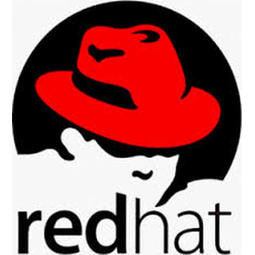
|
Employers Modernizes
Modernize Japan’s financial services sectorTo improve operational efficiency, Japanese financial institutions urgently needed to modernize their legacy systems. The industry faced several challenges, including flexibility, development speed, and complex regulations. To address these issues, NTT DATA wanted to build an innovative financial services delivery platform using open source technologies. The company chose Red Hat hybrid cloud and automation technologies to develop, deploy, and automate new applications for its banking customers.
|
|
|
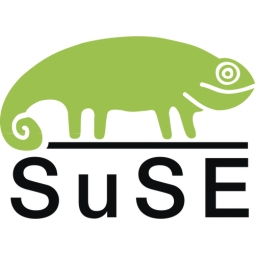
|
Teradata's Transformation: Enhancing Performance and Customer Value with SUSE
Teradata Corporation, a leading analytic data solutions company, was facing a significant challenge. The company had developed and supported its own version of UNIX, called “MP-RAS,” to meet the scalability, security, and flexibility demands of its customers. However, maintaining security and function updates for MP-RAS was becoming increasingly complex and problematic. Furthermore, Teradata's customers were concerned about speed and staying up-to-date, which led to the company constantly trying to push performance. The complexity of managing, supporting, and driving MP-RAS was escalating, and Teradata needed a more efficient solution to meet its customers' needs.
|
|
|
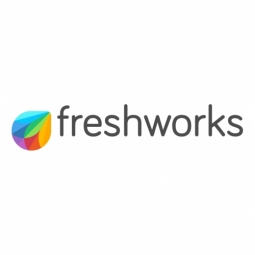
|
BrewDog's Customer-Centric Approach in Times of Uncertainty
BrewDog, a Scottish-born craft beer business, faced a significant challenge during the COVID-19 pandemic. With their bars closed, the company saw a surge in online orders and customer inquiries. The customer service team, which handles all e-commerce customers and general brand-related queries, was overwhelmed with the sudden increase in activity. The team was dealing with up to 2000 tickets a day during the lockdown, a significant jump from the usual 150-200 tickets. The fast-paced nature of BrewDog's operations, with new projects and initiatives launching daily, further complicated the situation. The company's existing processes, which were fairly manual, were not equipped to handle this surge in volume. The challenge was to quickly adapt and streamline their customer service operations to continue providing excellent service during these uncertain times.
|
|
|
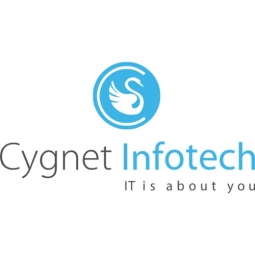
|
Streamlined Daily Transport Operations
The challenges are as follows:Extreme traffic congestionDegradation of ambient air qualityLack of forecasts for traffic operationsLack of transit fleet operation information from varied transportation systems
|
|
|
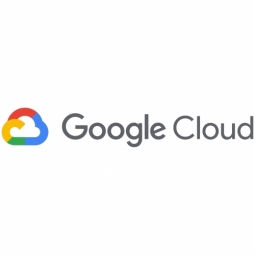
|
Banco Davivienda: Accelerating Digital Transformation with Google Workspace
Banco Davivienda, Colombia’s third largest bank, was facing a challenge in improving its customer ratings due to its continued reliance on manual processes. Despite having a reputation as a banking innovator and a trusted financial services provider, the bank recognized the need for a digital transformation to enhance customer interaction and drive efficiencies. The bank identified six transformation projects, including a sales performance model, sales digital support, self-learning, digital and effective meetings, digital workflows approval, and project management. However, the bank needed a technology partner to support this transformation and help change the way people worked, drive efficiencies, and improve performance.
|
|
|

|
Bank BRI: Revolutionizing Financial Inclusion in Asia with Digital Banking
Bank Rakyat Indonesia (Bank BRI), one of the largest banks in Indonesia, was faced with the challenge of increasing financial inclusion among unbanked Indonesians. The bank had an ambitious target of having 84 percent of Indonesians participating in the banking system by 2022. However, the bank's legacy technologies were proving to be a hindrance in achieving this goal. Each of the bank's products had their own public APIs, which were difficult to manage, secure, and monetize. Additionally, the process of onboarding new partners using host-to-host and VPN technology was time-consuming, taking up to six months. The bank also faced the challenge of reaching a largely rural population, with an estimated $8.3 billion in currency being held outside the banking system.
|
|
|

|
bolttech: Revolutionizing Insurance with Apigee and Google Cloud
bolttech, an international insurtech business, was launched in 2020 with the aim of building a leading, technology-enabled ecosystem for protection and insurance. The insurance sector has traditionally been slow to embrace trends such as hyperconnectivity, and bolttech saw an opportunity to change this. The company's technology strategy involved enabling both supply side insurance carriers and demand side business partners to connect seamlessly to its exchange. However, bolttech faced challenges in finding an API management solution that could provide a superior integration experience with its partners across Asia, Europe, and the United States. The solution needed to support growth in traffic, promote a thriving developer ecosystem, and provide efficiency benefits from the deeper connection between systems and components.
|
|
|
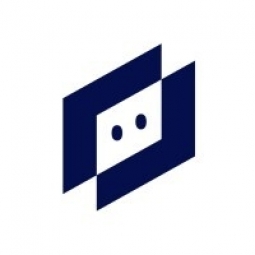
|
GCISD Accelerates Digital Transformation with LogicMonitor
GCISD, a technology-forward district in Grapevine, Texas, with around 14,000 students and 1,800 staff, faced the challenge of managing an average of 40,000 devices online at any given time. The district had a 1:1 device policy and a BYOD policy, which led to the need for a secure observability platform that could provide best-in-class network monitoring, support all the technology systems they used every day, and offer robust alerting and forecasting systems to solve problems before they impacted teachers and students. Prior to using LogicMonitor, the district used several tools for monitoring networks and pulling logs, which was time-consuming and inefficient.
|
|
|
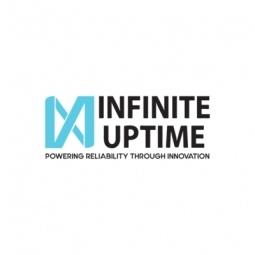
|
USD 1.2 Million Saved On A Forging Press Line By Predicting Cutter Life
The major press line in the company has a circular saw machine which cuts metal rods with precision in predefined lengths for further heating in the furnace. The cut pieces are then fed to the forging line to make automotive components. The length and perpendicularity of the cut pieces are crucial to obtain a good quality forging.It was observed that circular saw failed to maintain the precise length and perpendicularity while cutting the metal rods leading to heavy rejections. This was a serious concern and routine preventive maintenance was unable to overcome it.
|
|
|
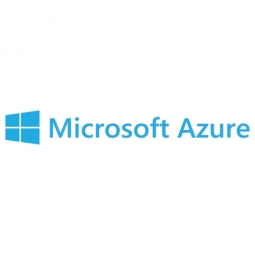
|
AIA Hong Kong & Macau's Digital Transformation with Microsoft Azure Active Directory B2C
AIA Hong Kong & Macau, a leading insurance company, was faced with the challenge of providing a secure and trusted digital experience for its customers. The company had opened its digital platform, AIA Connect, to its customers, offering a single platform for managing all insurance needs. However, the company was faced with the responsibility of ensuring that this platform was secure and trustworthy. The company was committed to protecting its customers from complex sign-in processes and potential online fraud risks and security threats. However, the growing user demand and the need for constant innovation around AIA Connect created a trifecta of issues—a longer and less reliable customer sign-in process, a growing risk of security fraud incidents, and the slow rollout of new features and innovations. The core cause was the aging legacy in-house platform that managed user identity and sign ins, which was struggling with scalability and a lack of compliance to modern standards.
|
|
|
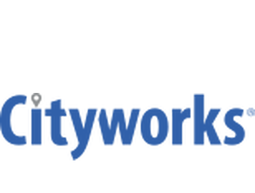
|
Leveraging GIS Data for Prioritizing Traffic Safety Service Requests: A Case Study of Oakland
The City of Oakland Department of Transportation (OakDOT) was faced with the challenge of receiving more traffic safety improvement requests than they had the resources to implement. The city needed a method to effectively prioritize these service requests. The challenge was further compounded by the fact that traffic-related incidents were the leading cause of death for people aged 5 to 24, and the second leading cause for all other age groups under 85 in the U.S. Low-income communities and communities of color were more likely to experience traffic-related injury and death. Therefore, the city needed a solution that would not only prioritize service requests but also ensure equity in service delivery.
|
|
|
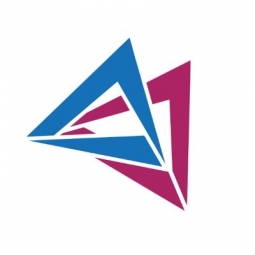
|
Seamless Platform Modernisation for Operational Excellence in Electronic Instruments
The customer, a US-based market leader in delivering innovative electronic instruments and electromechanical device solutions, faced a significant challenge with their instrumentation product line. The gateway managing this line was built using Printed Circuit Boards (PCB), which had become obsolete in the market. This outdated technology was limiting the company's ability to enhance their gateway solution and add extensive software functionalities. The customer needed to upgrade the hardware environment to increase its business value and market appeal. The challenge was to breathe new life into their gateway solution, modernise the application codebase, and reduce the Bills of Material (BOM) cost and form factor.
|
|
|
|
|
IFS Enables Future Growth for Heerema Fabrication Group
Heerema Fabrication Group (HFG), a leading company in the offshore oil & gas and energy, engineering and construction industry, was facing a significant challenge. For over a decade, HFG had been using custom-built software for its primary business process. However, with the company's revised strategy of becoming a global EPC(I) contractor, the legacy software rapidly became obsolete. A new ERP software was necessary to support HFG's emphasis on becoming a global player in engineering, procurement, construction and installation (EPC(I)) and turn-key contracting. The company needed a solution that would support its core processes, facilitate collaboration with subcontractors, and provide project management support for EPC(I) projects. The challenge was to find a solution that would meet these requirements while also being financially viable.
|
|
|
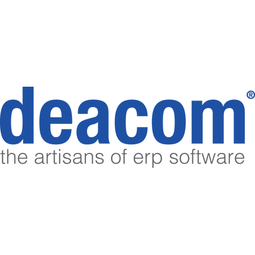
|
Tripling Sales with Deacom ERP: A Case Study on Copps Industries
Since 1979, Copps Industries has been a global provider of epoxy resins to various markets. However, the company faced challenges in scaling to meet market demand due to outdated technology and manual workarounds to fill in process gaps. The company relied heavily on people to deliver scalable and repeatable processes, which limited the volume of SKUs manageable by their small team. Copps was also burdened with an outdated disk-operating system (DOS) that no longer supported its business needs, and employees struggled with managing a paper trail of documents. The retirement of two 20+ year veterans further complicated matters, leading to issues with process control and onboarding new employees. Copps Industries needed a solution that would tighten process control, scale with its business, and centralize information for easy access.
|
|
|
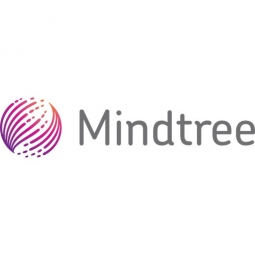
|
Global Timeshare Company Accelerated Its Digital Marketing and E-commerce Engine
The client's go-to-market teams weren't accustomed to attracting new buyers in the digitally networked world. These prospects come from an evolving demographic — millennials and Gen Z who were increasingly adopting the new ways of evaluating options online and making reservations.There were three key challenges that the client was facing.Outdated and aging systems (legacy core)Inadequate web presence and e-Lack of predictive customer understanding and analytics
|
|
|
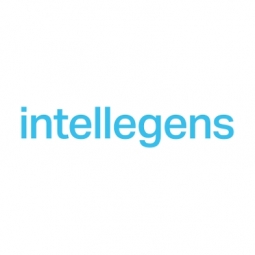
|
Optimizing Tooling for Composite Drilling Using Deep Learning
Laminated fibre-reinforced polymer (FRP) matrix composites are increasingly used in industries such as aerospace due to their excellent mechanical properties and highly-tailorable design. However, this tailorability can negatively impact costs, productivity, and sustainability during manufacture, especially in machining where FRP part-specific defects occur. Process uncertainties resulting in large, unpredictable defect generation are a common cause for prescribing overly-conservative cutting tool use limits, based on part quality criteria. Due to the wide array of tool designs and workpiece material configurations available, an application-specific approach is required to identify the most effective cutting strategies. Optimal cutting parameters can be found using an exhaustive, wide-boundary, DoE-based approach, with slow and costly testing required to identify absolute tool life limits. The challenge was to establish a novel machine learning-based method to predict tool life from start-of-life performance data, reducing experimental time and cost. The project was particularly challenging, because the original dataset was sparse, with 82% of the target data missing.
|
|
|
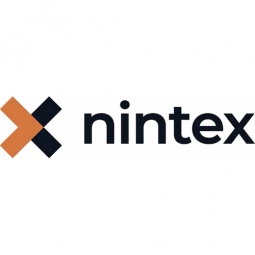
|
Applied Technical Services Streamlines Document Management with Digital Workflow
Applied Technical Services (ATS), a leading testing, inspection, and consulting engineering firm in North America, was facing a significant challenge in managing its information. With a 20% year-over-year growth, 700 employees, and thousands of active projects, the company's existing information management approach was no longer sufficient. The information storage was inconsistent and fractured among departments, leading to inefficiencies in operations. The lack of a clear and consistent process and data workflows further compounded the problem. ATS wanted to overhaul its legacy internal portal, create a department-specific home page with centralized document storage, and establish a customer portal. However, to achieve these objectives, they needed a more intuitive and automated solution.
|
|
|

|
3C Product Online Appearance Quality Inspection
For a 3C product supply chain enterprise, the monthly labour cost of manual visual inspection exceeds 2 million, the proportion of quality inspection personnel accounts for 20%~40%, and there are quality problems such as missed inspections. At present, manual quality inspection is faced with the problems of quality, cost, response to special scenarios, and information integration. The details are as follows:Quality: The subjective factor of manual quality inspection has a great influence on the judgment result, and there will be a problem of missed inspection based on visual fatigue; Production status of a 3C product supply chain enterprise.Information integration: There is no effective accumulation and utilization of production data, and subsequent process reengineering and quality analysis cannot be promoted, and the adaptation to automated production processes is weak.Cost: The turnover of personnel is high, resulting in high training and labour costs, and it is difficult to recruit workers.Efficiency: Traditional machine vision uses programmed computing logic for visual inspection, which has poor anti-interference ability for such complex surface inspection, high false detection, and heavy workload for personnel re-judgment.
|
|
|
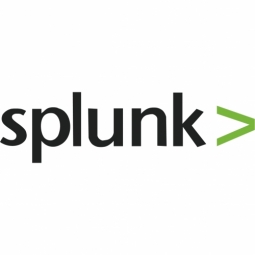
|
Jupiter Shop Channel Enhances IT Operations and Customer Engagement with Splunk
Jupiter Shop Channel (JSC), Japan’s first television shopping network, was facing several challenges in executing its omni-channel strategy for unified shopping across TV and e-commerce. The company needed a platform that could convert data into actionable insights, simplify workflows, boost interdepartmental collaboration, and improve customer engagement. The IT staff was burdened with increasing workloads, especially in failure investigation, after the launch of an e-commerce site to support the omni-channel initiative. The company was using Zabbix, a software tool for detecting system errors, but it was not effective in handling disparate data sources across multiple servers and operational silos. The IT team had to manually correlate access logs and application logs before they could analyze failures, which was time-consuming and challenging.
|
|
|
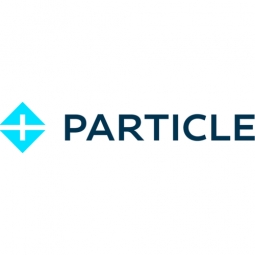
|
IoT-Driven Data Optimization: A Case Study on Service Thread
Service Thread, a leading American manufacturer of commercial thread and yarn, faced significant challenges in monitoring and analyzing their factory performance. With over 3,000 spindles across 115,000ft2 of floor space and 24 different machine types, the company struggled to effectively determine the actual utilization percentage of their factory. The traditional method of frequent and selective in-person inspections of the machines was not only time-consuming but also lacked accuracy. The company was in dire need of a solution that could provide real-time, accurate data on machine utilization to help them make informed business decisions and optimize their operations.
|
|
|
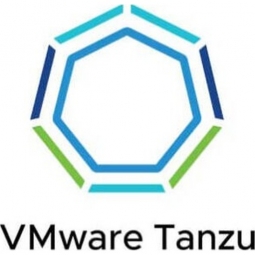
|
Software Innovation and Agility Elevates Thales to New Heights
Thales, a global leader in aerospace, space, defense, ground transportation, and security, was facing the challenge of keeping up with the rapidly changing world. The company needed to stay committed to building innovative solutions that would not only benefit their customers but also their business. The challenge was to transform their approach to technology in a way that would allow them to grow and maintain their position as a global leader in their respective fields.
|
|
|

|
Wind River and Parkeon: Making the Smart City a Reality
Parkeon, a global leader in urban mobility technology, had a vision to transform their devices into a new channel for a wide range of city services, creating a developer ecosystem or an 'app store' for meters. The company aimed to create multi-service kiosks that are fully integrated into the Smart City ecosystem, allowing partners to build and deliver additional services through their devices. However, a significant challenge was connecting and integrating these new terminals with the company’s back-office business systems. Parkeon had been using its own network for device connectivity, but with the trend towards the Internet of Things, they realized they needed a more robust connectivity solution than they could build themselves. They needed a solution that could manage deployed meters and integrate the connectivity part of the solution.
|
|
|
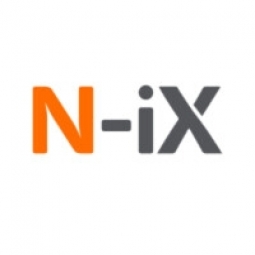
|
Stellaris Game Art Production: A Case Study of N-iX and Paradox Interactive Collaboration
Paradox Interactive, the creator of the grand strategy video game Stellaris, needed to release regular updates and downloadable content (DLC) for its games. The challenge was to create appealing game art assets within tight deadlines. The team had to follow distinctive art production guidelines provided by the client, which described a unique art creation pipeline. Another challenge was understanding the multiple races and their specific designs in Stellaris, a game with numerous galaxies and races with different styles and features. The team had to study the game carefully to produce art that matched the game style and ensure smooth project implementation. Additionally, the team faced the challenge of meeting tight deadlines at certain stages of the project, where they had to deliver all the assets in time for the DLC release.
|
|




